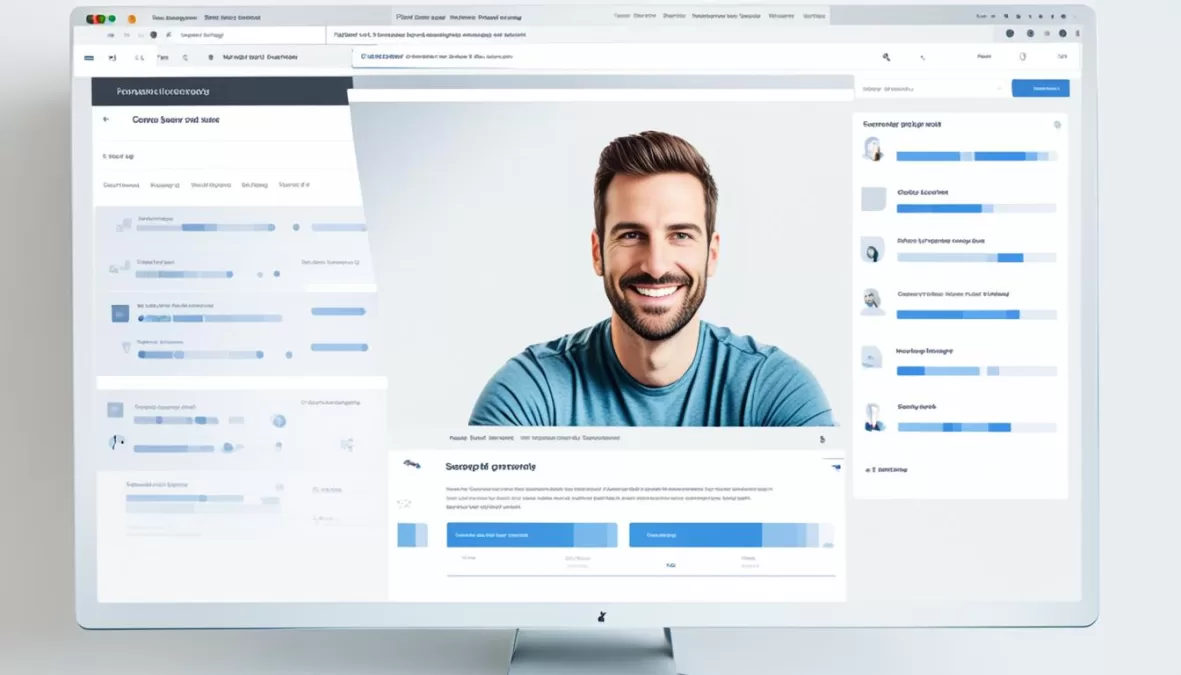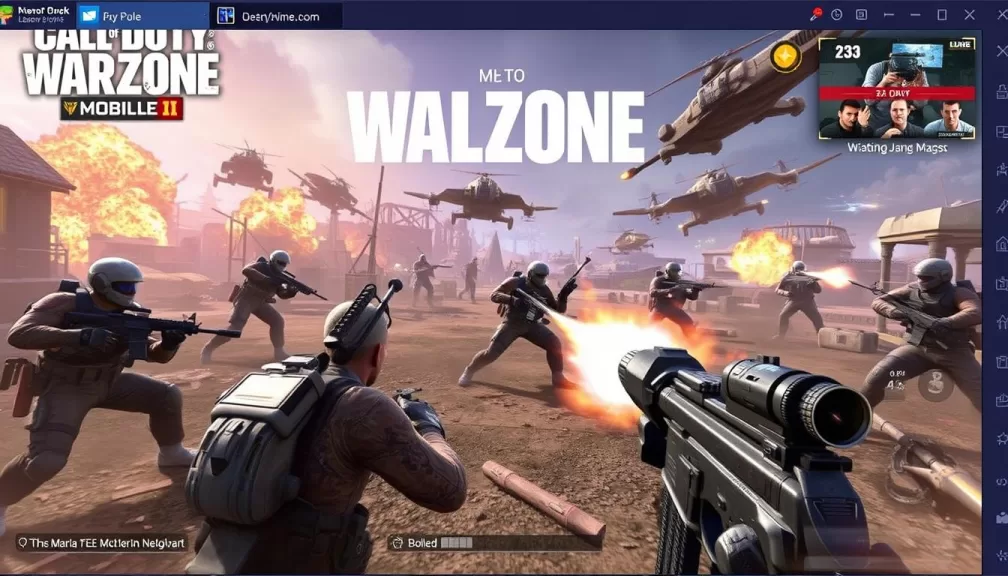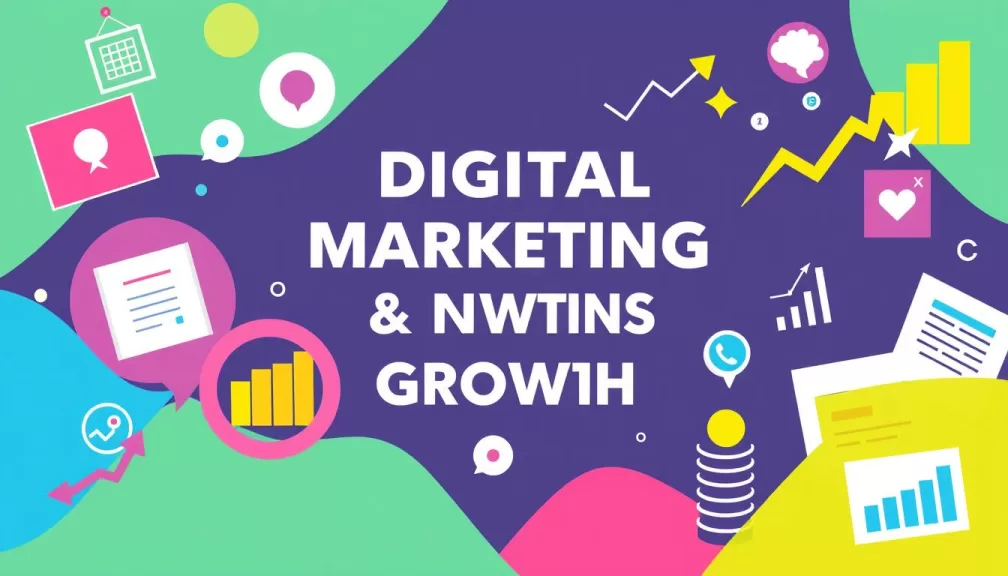Search GPT is set to change the search world with its launch by OpenAI. This new search tool blends traditional search engine functions with generative AI power. It makes OpenAI a big competitor to Google, Yahoo, and Bing.
Search GPT started on July 26, 2024, and was first shared with 10,000 testers. It’s set to become part of OpenAI’s ChatGPT soon. The main aim of Search GPT is to give users quick, precise, and relevant answers. It uses advanced natural language processing and gives fast access to a huge online database.
Key Takeaways
- Search GPT, developed by OpenAI, combines traditional search engine features with generative AI capabilities.
- The prototype was initially released to a limited group of 10,000 test users, with plans to integrate it into OpenAI’s ChatGPT.
- Search GPT aims to provide users with fast, accurate, and relevant answers by leveraging advanced natural language processing and access to up-to-date online information.
- Search GPT positions OpenAI as a direct competitor to various search engines like Google, Yahoo, and Bing.
- The success of Search GPT will impact digital marketing, content creation, and user experience in the evolving search landscape.
An Extensive History of Search GPT
The story of Search GPT starts with OpenAI, a top artificial intelligence research group. In 2018, they launched the Generative Pre-trained Transformer (GPT-1). This model was a big step forward in understanding and creating human-like language.
Since then, the technology has grown fast. OpenAI brought out GPT-2 in 2019 and GPT-3 in 2020. Each update made the models smarter, with GPT-3 having 175 billion parameters. This lets them understand and create text that sounds more human.
Leveraging Advancements in Natural Language Processing
Search GPT uses these new language skills to make searching better. It uses deep learning and big data to understand what users are looking for. This makes search results more accurate and relevant.
This shows how fast AI is improving. As language models get bigger and smarter, they can change how we search and find information. This is really exciting.
| Model | Year Introduced | Number of Parameters |
|---|---|---|
| GPT-1 | 2018 | 117 million |
| GPT-2 | 2019 | 1.5 billion |
| GPT-3 | 2020 | 175 billion |
The growth from GPT-1 to GPT-3 is amazing. Each update made the models more human-like. This has led to new search technologies like Search GPT.
“The development of Search GPT represents a significant leap in AI-driven search technology, integrating deep learning techniques, vast datasets, and sophisticated algorithms to interpret and respond to complex queries.”
What is Search GPT?
Search GPT is a new, exciting development in search technology. It aims to change how we find information by blending large language models like GPT with the internet’s real-time knowledge.
Search GPT is an AI-powered search engine that uses advanced natural language processing. This means it gives users accurate, detailed, and current answers to their questions. Unlike old search engines, it understands the intent and context of searches, giving results that match what users need.
One key feature is its conversational search. Users can talk to it to refine their searches naturally. This makes the search experience better by giving more detailed and relevant information.
Search GPT also uses the internet’s vast knowledge, making it different from traditional search engines. It gives users the latest and most relevant information, overcoming the limits of old search results.
Developed by OpenAI, Search GPT has caused a big stir in the industry. It has the potential to change how we search and get information. This could lead to a new era in AI-powered search technologies.
| Feature | Description |
|---|---|
| Conversational Search | Allows users to engage in natural language dialogues to refine and expand their searches. |
| Real-time Knowledge Access | Taps into the vast and constantly updating knowledge of the internet to provide the most relevant and timely information. |
| Advanced Natural Language Processing | Utilizes the capabilities of large language models like GPT to deeply understand user intent and context. |
| Content Attribution and Transparency | Emphasizes collaboration with publishers to provide clear attribution and links to original sources. |
Search GPT shows how AI can transform search technology. It combines natural language processing and real-time knowledge access. This could change how we search, discover, and interact with information online.
How Does Search GPT Work?
Search GPT is a cutting-edge AI search engine that changes how we find and use information. It’s different from old search engines that just look for keywords. Search GPT uses advanced language models and search tools for a better user experience.
Query Processing
Search GPT deeply understands what the user is looking for. It uses natural language processing to figure out the intent and context of each search. This makes sure the answer matches what the user wants.
Search Execution
After analyzing the query, Search GPT finds the right search terms and searches a big database for the best content. This mix of understanding language and targeted search makes it stand out from other search tools.
Information Retrieval
Search GPT looks deeper than just keywords. It checks the info it finds to pick out the most important parts. This way, it gives the user a clear and focused answer.
Content Analysis
With its advanced language models, Search GPT can analyze the content it finds. It picks out key points, finds relevant details, and gets the big picture. This helps it create a better response.
Response Generation
Using what it knows about the query and the info it found, Search GPT makes a clear and relevant answer. This could be direct answers, summaries, or links to more info.
Citation and Sourcing
Search GPT adds citations and sources to its answers. This lets users check the data’s reliability and dive deeper into the topic if they want.
Iterative Refinement
Some versions of Search GPT keep improving its search or answer based on more questions or clarification requests. This back-and-forth makes sure it meets the user’s needs fully.
Search GPT combines these features to offer a new kind of search experience. It helps users find what they need fast and accurately.
Exciting Features of Search GPT
Search GPT is a new AI search engine from OpenAI. It changes how we find and use information. It uses real-time data, is very accurate, and has a huge knowledge base for better search experiences.
Real-time Information Access
Search GPT is different from old language models. It uses the latest internet data for answers on fast-changing topics and news. This means users get the newest and most relevant info quickly.
Enhanced Accuracy and Fact-Checking
Search GPT checks many sources to make sure answers are right. It can spot and fix wrong info. This makes the info it gives more trustworthy, helping users make smart choices.
Broad and Deep Knowledge Base
Search GPT knows a lot because it combines its language skills with the internet’s vast info. It gives detailed answers on many topics. This meets the varied needs of its users.
Dynamic Response Generation
Search GPT can mix data from different places with its language skills. This makes its answers clear, relevant, and personal. Users get search results that are engaging and suited to them.
Source Citation and Transparency
Search GPT can show where it gets its info from or link to the sources. This makes the search process clear. Users can check the info’s trustworthiness and look up the original sources.
These features of Search GPT will change how we find and use information. It promises a more precise, full, and focused search experience.

| Feature | Description |
|---|---|
| Real-time Information Access | Search GPT can process current data from the internet, providing up-to-date answers on recent events and evolving topics. |
| Enhanced Accuracy and Fact-Checking | Search GPT’s cross-referencing capabilities improve response accuracy and help identify potential misinformation. |
| Broad and Deep Knowledge Base | Search GPT’s knowledge base combines its language model with vast web-based information, enabling comprehensive answers. |
| Dynamic Response Generation | Search GPT’s advanced natural language processing synthesizes data from multiple sources to produce coherent, relevant responses. |
| Source Citation and Transparency | Search GPT can cite sources and provide links to the information used, enhancing credibility and transparency. |
What is Search GPT How It Will Work
A new AI-powered solution is changing how we search for information. Search GPT, made by OpenAI, is set to change how we use search engines. It offers a more personal, chat-like, and accurate way to find answers.
Search GPT doesn’t just look for keywords like old search tools do. It understands the context and what you’re really asking. This lets the AI give you answers that are right on point, using the latest web info.
One cool thing about Search GPT is how it lets you talk back and forth. You can ask more questions and get answers one after another. This makes searching easier and more natural, helping you find what you need fast.
Search GPT is also a big deal because it could change the game for search engines. With OpenAI’s advanced language models, it offers a deeper and wider knowledge base. Plus, it focuses on ethical AI and credits sources, which builds trust and fights fake news.
As Search GPT grows and gets more popular, it will be exciting to see its impact. It could start a new era of how we explore and use online info. With its promise of a more personal and accurate search, it could change how we discover and manage knowledge online.
| Feature | Traditional Search | Search GPT |
|---|---|---|
| Approach | Keyword-based | Contextual understanding |
| Interaction | Static search results | Conversational engagement |
| Knowledge Base | Limited to indexed web content | Broad and deep, powered by OpenAI models |
| Information Accuracy | Varied quality and reliability | Focused on ethical AI and source attribution |
| User Experience | Transactional search | Personalized and interactive |
As Search GPT keeps improving, it will be exciting to see how it changes searching. It’s bringing a new, smarter way to find the info we need.
Personalization and User Satisfaction
SearchGPT stands out because it personalizes responses based on what users like and do. This makes users happier and more productive. It finds the right info from many web pages and matches it with what the user is looking for.
SearchGPT learns from how users interact with it. This means it can give tailored recommendations and answers that match what users are interested in. This saves time and makes searching more rewarding.
The tool aims to make searching easy and fun. It combines AI-powered search with traditional results for a chat-like experience. It’s like having a smart friend help you find what you need.
| Feature | Benefit |
|---|---|
| Personalized Responses | Improved user satisfaction and productivity |
| Tailored Recommendations | Alignment with individual interests |
| Conversational Interaction | Enhanced user experience |
SearchGPT is unique because it gets what users want and gives them the right info. Unlike old search engines, it uses a chat-like interface. This lets users ask follow-up questions, making searching more dynamic.
“SearchGPT promises to deliver a more personalized, conversational, and intuitive search experience.”
SearchGPT marks a new chapter in online searching. It’s all about making searches more personal and interactive. As it grows, users will get a search experience that really fits their needs.

Ethical AI Use and Content Attribution
Search GPT is all about using AI ethically and giving credit where it’s due. OpenAI, its creators, stress the need for verified sources to stop misinformation and build trust. This approach helps keep the information accurate and reliable.
Search GPT checks its data carefully to make sure it’s right and current. It always credits and links to the original sources. This way, users know where the info comes from and can find more details easily. It’s all about supporting publishers and creators while avoiding plagiarism and errors.
OpenAI is working closely with publishers to make Search GPT better. They ensure the AI respects creators’ rights and keeps the info ecosystem strong. By focusing on ethical AI use and content attribution, Search GPT is setting a new bar. It’s tackling the big issues of misinformation and data validation in AI search.
| Feature | Description |
|---|---|
| Rigorous data validation | Search GPT employs advanced techniques to ensure the accuracy and currency of the information it provides. |
| Prominent publisher attribution | Search GPT prominently cites and links to publishers, giving users clear visibility into the source of the information. |
| Collaboration with publishers | OpenAI is actively working with publishers to design a Search GPT experience that respects publisher rights and maintains the integrity of the content ecosystem. |
Search GPT is leading the way in ethical AI use and giving credit where it’s due. It’s setting a new standard for AI search, tackling the big issues of misinformation and data validation.
Industry Endorsements and Challenges
Search GPT, OpenAI’s new AI-powered search tool, has caught a lot of attention. Some see great potential in it, while others worry about its limits and challenges.
Nicholas Thompson, CEO of The Atlantic, is excited about OpenAI’s partnership with his publication. He believes AI search will change how we use the internet. It’s important to make sure this technology respects and protects journalism and publishers.
But, Search GPT’s first demo showed some wrong answers. The Atlantic was the first to point this out. OpenAI said the tool is still in its early stages and is working on making it better. They aim for more accurate and fact-checked results.
People’s opinions on Search GPT vary. Some Redditors think it’s just another closed system that limits information access. Yet, others think the first AI to truly master search will lead the market. Even big names like Google haven’t yet achieved perfect search results.
| Metric | Projection |
|---|---|
| OpenAI’s Prototype Users | 10,000 |
| Potential Operational Losses | $5 billion |
| Q1 “Chat GPT” Traffic vs. “Google” Queries | 5% higher |
| Q3 2023 “Chat GPT” Impressions vs. “Google” Queries | 9.9 million vs. 1.9 million |
The future of Search GPT and its effects on search technology is still up in the air. But, one thing is sure: the battle to change how we find information online is just starting.
Conclusion
Reflecting on our journey with Search GPT, I feel excited and hopeful about AI search technology’s future. OpenAI’s Search GPT is a big leap forward. It makes searching more like talking, personal, and smart, changing how we use the internet.
At first, Search GPT faced some issues, but OpenAI quickly fixed them. I think this technology will deeply change digital marketing, content making, and how we experience the web. I’m excited to see how it will change how businesses and creators talk to their audiences and how people search for information.
The success of Search GPT relies on giving accurate info, respecting creators, and keeping users’ trust. As OpenAI keeps improving it, I’m sure it will be key in the future of search. I’m looking forward to seeing how it will make our online experiences better.





